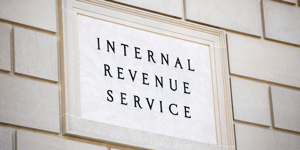
What NFPs Need to Know About New IRS E-Filing Requirements for 2023
Nonprofit organizations must keep up with a rather large amount of paperwork to maintain their tax-exempt status with the IRS. This includes filing regular tax and information returns.
New IRS regulations may relieve nonprofit organizations of much of the “paper” part of this process, although the “work” will remain in place.
In February 2023, the agency published a final rule that expands electronic filing requirements to include nearly all taxpayers and nonprofits that file at least 10 information returns and other documents during a tax year. This includes many types of returns that nonprofits commonly file, such as 1099 forms.
While the regulations might not require nonprofits to file everything electronically, that seems to be the direction in which the IRS is heading. Read on to learn more about how the new regulations may affect nonprofit organizations.
Who Will Be Required to File Electronically?
Tax-exempt organizations are already required to file certain returns electronically. A law passed by Congress in 2019 made electronic filing mandatory for Form 990, the Return of Organization Exempt from Income Tax, as well as certain related forms. Small nonprofit organizations with annual gross revenue of no more than $50,000 may e-file Form 990-N. Certain other nonprofits may e-file Forms 990-EZ, 990-PF or 990-T.
The new IRS e-filing regulations require organizations that file a total of at least 10 information or tax returns to use electronic filing for all of these returns. Previously, the threshold for mandatory e-filing was 250 returns, making this a significant change.
Many provisions of the new rule will not apply to most nonprofits since they deal with for-profit activities by corporations, partnerships and other business entities. Nonprofits should take note, however, of the new e-filing threshold, which is likely to affect many organizations.
How Will the IRS Count Returns to Determine Who Must File Electronically?
Another important change brought by the new regulations involves how the IRS counts returns filed by an organization. Previously, taxpayers and nonprofits were only required to use electronic filing if they filed more than 250 of a particular type of form. If, for example, a nonprofit filed 249 returns using Form A and 251 returns using Form B, they were only required to use e-filing for Form B.
Under the new system, the IRS counts all of the returns that an organization is filing. If the organization files six returns on Form A and five returns on Form B, they will have to use electronic filing since the total number of returns is 10 or greater.
The regulation considers all returns that an organization files for a tax year, including those that are not required to be filed electronically. If an organization is filing a total of 12 returns, but four of them are excluded from the e-filing regulation, the organization must still e-file the other eight.
Which Returns Does the New Regulation Cover?
The e-filing requirements include “returns of any type,” including:
- Information returns, such as forms W-2 and 1099;
- Income tax returns;
- Employment tax returns, including Forms 940 and 941; and
- Excise tax returns.
Nonprofit organizations with employees should plan for e-filing employment-related returns. Even if an organization has fewer than 10 employees, they may still have to file a total of more than 10 returns to address all of the requirements related to issues like payroll taxes.
The e-filing requirements can become especially complex when employee benefits, such as retirement plans, are involved. The regulation generally requires organizations to e-file returns like Form 5500, Form 8955-SSA and Form 5330. Each organization should consult with a tax professional to get a better sense of their specific obligations.
The IRS has created an online portal to help organizations that need to e-file returns using various types of Form 1099. The Information Returns Intake System (IRIS) became available at the beginning of 2023 to assist organizations with their 2022 returns. It can also help with 2023 returns.
When Do These Changes Take Effect?
The new e-filing regulation will apply to information and tax returns filed for the calendar year 2023. This means that it will not take full effect until these returns start coming due on or after January 1, 2024. Nonprofits can begin to plan for e-filing now so that they will be ready when 2024 arrives.
Find Out More About New IRS Filing Requirements
IRS filing requirements can be complicated, confusing and time-consuming for nonprofit organizations. They are also critically important to keep nonprofits in good standing with the IRS and maintain their tax-exempt status.
Nonprofit leaders do not have to face these obligations alone. Help is available that can handle IRS filing requirements and let organizations focus their efforts on their missions.
To learn more about LGT and how we can serve you, contact us here.



